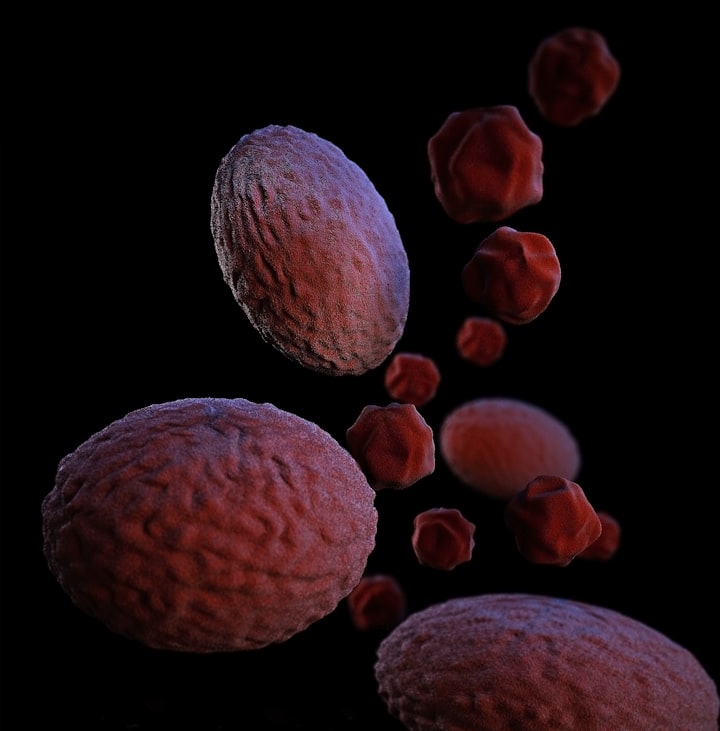Anthrax Disease
Causes, Prevention, and Treatment
Introduction
Anthrax, a potentially deadly infectious disease, has long been a topic of concern due to its ability to affect both humans and animals. Understanding its causes, implementing preventive measures, and employing appropriate treatment strategies are crucial for managing this disease. In this blog post, we will delve into the causes, prevention, and treatment options for anthrax.
Causes of Anthrax
Anthrax is caused by the spore-forming bacterium called Bacillus anthracis. The spores can survive in the environment for extended periods, making anthrax a persistent threat. Humans can contract anthrax through direct contact with infected animals or their products, inhalation of spores, or ingestion of contaminated meat. It's important to note that anthrax is not spread from person to person.
Prevention of Anthrax
Preventing anthrax involves a combination of measures, including public health initiatives and personal precautions. Here are some key preventive strategies:
1. Vaccination: Vaccines are available for individuals at high risk of exposure, such as workers in laboratories, livestock handlers, and military personnel. The vaccine stimulates the immune system to produce protective antibodies against anthrax.
2. Animal Vaccination: Vaccinating livestock, particularly cattle, sheep, and goats, can help prevent the spread of anthrax. This measure protects both animals and humans who come into contact with them.
3. Proper Handling and Disposal: People working with animal products should follow strict hygiene protocols. This includes wearing protective clothing, gloves, and masks while handling potentially infected animals or contaminated materials. Proper disposal of animal carcasses and disinfection of affected areas are essential to prevent spore contamination.
4. Surveillance and Early Detection: Surveillance programs in livestock and high-risk areas can identify outbreaks promptly. Early detection allows for quick intervention and the implementation of control measures to prevent further spread.
Treatment of Anthrax
The prompt administration of appropriate treatment is crucial in managing anthrax and improving patient outcomes. The choice of treatment depends on the type and severity of anthrax infection. Common treatment options include:
1. Antibiotics: Early treatment with antibiotics, such as ciprofloxacin, doxycycline, or penicillin, is essential to eliminate the anthrax bacteria. These medications work by targeting the bacteria and preventing their growth and spread in the body.
2. Antitoxins: In severe cases, antitoxins may be administered alongside antibiotics to neutralize the toxins released by the bacteria. Antitoxins are derived from the blood of animals that have been immunized against anthrax.
3. Supportive Care: Supportive care measures, such as intravenous fluids, pain management, and respiratory support, may be necessary to stabilize patients and manage their symptoms. This is particularly important in cases of inhalation anthrax, which can cause severe respiratory distress.
Government and Individual Roles in Managing Anthrax
The management of anthrax requires a collaborative effort between governments, public health agencies, and individuals. Both the government and individuals play crucial roles in preventing and controlling anthrax outbreaks. Let's take a closer look at their respective responsibilities:
Government Roles:
1. Legislation and Regulation: Governments enact laws and regulations to establish guidelines for the prevention and control of anthrax. These laws may include requirements for animal vaccination, proper handling and disposal of animal carcasses, and the reporting of suspected cases to public health authorities.
2. Surveillance and Monitoring: Governments are responsible for implementing surveillance programs to monitor the occurrence and spread of anthrax. This involves monitoring livestock, conducting laboratory testing, and maintaining an effective disease-reporting system. Early detection enables swift response and containment measures.
3. Public Awareness and Education: Governments play a critical role in raising public awareness about anthrax, its transmission, and preventive measures. They disseminate information through various channels, including public health campaigns, educational programs, and media outlets. Well-informed individuals are more likely to take appropriate precautions.
4. Vaccination Programs: Government agencies often oversee vaccination programs for both animals and high-risk individuals. They collaborate with veterinary services to ensure widespread animal vaccination, reducing the risk of anthrax transmission to humans. For high-risk groups, such as laboratory workers or military personnel, governments may provide access to anthrax vaccines.
5. Emergency Preparedness and Response: Governments are responsible for developing contingency plans and response protocols to handle anthrax outbreaks effectively. This includes coordination between public health agencies, healthcare providers, and emergency response teams. Adequate resources, such as medical supplies, antibiotics, and antitoxins, need to be stockpiled for prompt deployment during emergencies.
Individual Roles:
1. Personal Hygiene Practices: Individuals must maintain good personal hygiene to minimize the risk of anthrax transmission. This includes regular handwashing with soap and water, especially after handling animals or animal products. Individuals should also avoid touching their face, mouth, or eyes before washing their hands.
2. Following Guidelines for Animal Handling: Livestock handlers, farmers, and individuals involved in animal-related industries should follow proper guidelines for handling animals. This includes wearing appropriate protective gear, such as gloves and masks, and practicing safe animal husbandry techniques. Any suspected cases of anthrax in animals should be reported to the relevant authorities.
3. Reporting Suspected Cases: Individuals who suspect they may have been exposed to anthrax or have symptoms consistent with the disease should seek medical attention promptly. Timely reporting enables healthcare professionals to diagnose and treat anthrax effectively while preventing further spread of the disease.
4. Compliance with Vaccination Recommendations: Individuals in high-risk occupations, such as laboratory workers or individuals working in close proximity to livestock, should comply with vaccination recommendations. By receiving the anthrax vaccine, they protect themselves and reduce the likelihood of becoming a source of transmission.
5. Cooperation with Public Health Authorities: Individuals should cooperate with public health authorities during anthrax outbreaks. This includes providing information, participating in surveillance programs, and following the guidance and recommendations provided by health officials.
Conclusion
The effective management of anthrax requires a coordinated effort between governments, public health agencies, and individuals. Governments play a critical role in enacting legislation, implementing surveillance systems, raising public awareness, and ensuring access to vaccines and resources. Individuals contribute by practicing good personal hygiene, following guidelines for animal handling, reporting suspected cases, and complying with vaccination recommendations. By working together, we can mitigate the risks associated with anthrax, protect public health, and minimize the impact of outbreaks.
About the Creator
FELIX Olikagu
Captivating storyteller and compassionate wordsmith. Join me on a journey through the power of words, as we explore diverse topics with depth, creativity as it concerns Health issues, Environment, Emotions, and a touch of magic. Explore!







Comments
There are no comments for this story
Be the first to respond and start the conversation.